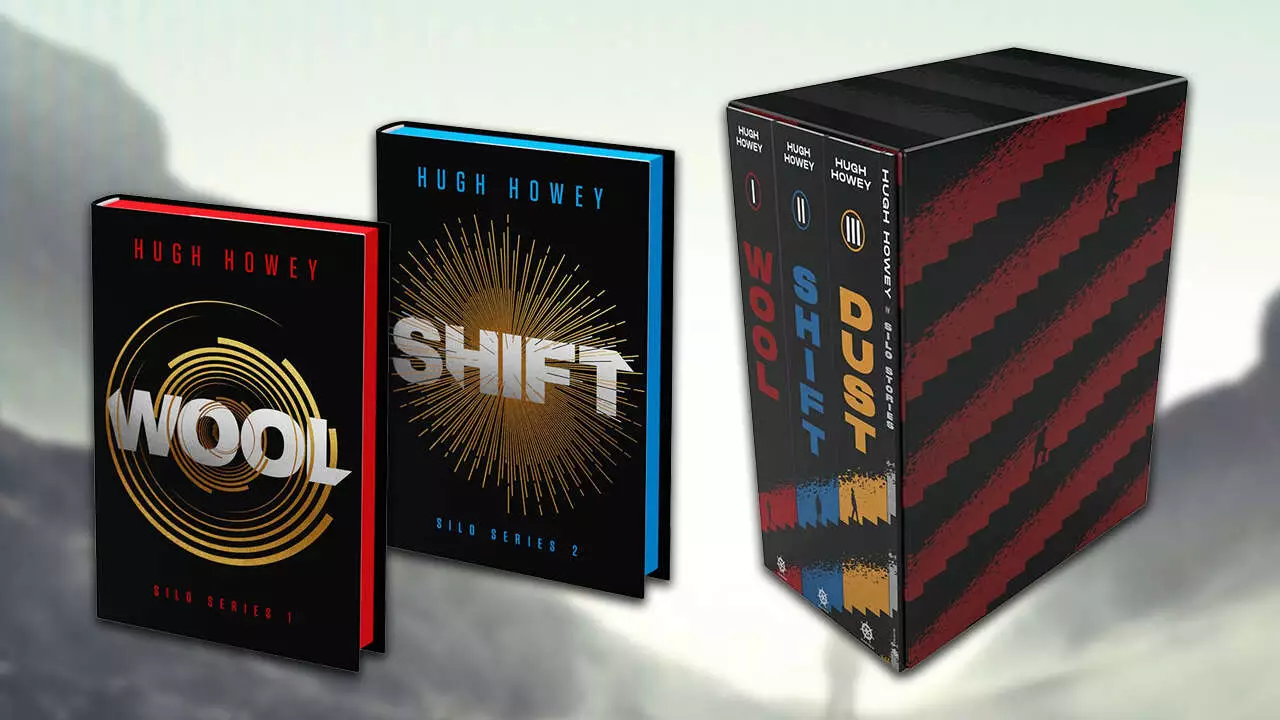In the era of digital dominance, where instant access to stories has become the norm, the resurgence of high-quality physical editions signals a profound shift in how enthusiasts engage with literature. Deluxe collector’s editions transcend mere reading—they become an immersive art form that elevates a reader’s journey into a universe of craftsmanship and storytelling. When fans of Hugh Howey’s dystopian series discover the exquisitely designed editions of *Shift* and *Wool*, they are not simply acquiring books—they are embracing carefully curated artifacts that honor the depth of science fiction’s storytelling potential. These editions are a testament to the idea that the physical manifestation of a story can deepen emotional investment and sustain the legacy of a beloved series.
The tactile experience of a beautifully crafted hardcover, adorned with striking artwork, sprayed edges, and illustrated endpapers, transforms reading from a passive activity into an interactive, sensory journey. Such editions do more than preserve stories—they elevate them. For example, the *Shift Deluxe Collector’s Edition* isn’t just a collection of novellas; it’s a visual and tactile celebration of Hugh Howey’s visionary universe. A detailed topographical map inside the dust jacket offers a spatial understanding of the silos, anchoring readers firmly within the story’s world before they even turn the first page. The choice of sprayed edges—blue for *Shift* and red for *Wool*—symbolically underscores the thematic contrast and narrative flow, turning each book into a collectible piece of art that beckons to be displayed, not just read.
This approach to publishing champions the idea that physicality can increase the emotional gravitas of a sci-fi saga. In a digital age, where e-books tend to dominate transfers of knowledge, the collector’s edition establishes a new paradigm: books as treasured artifacts, embodying the author’s vision and the fan’s dedication. Passionate readers no longer need to settle for standard editions; they can indulge in lavish versions that turn their collection into a tribute—an homage to the genre’s rich history of craftsmanship.
Beyond the Story: A Gateway to Cultural and Artistic Value
Further illuminating the power of collector’s editions is the expanded content these editions often include. Hugh Howey’s *Shift* and *Wool* editions contain exclusive essays, original short stories, and behind-the-scenes insights into the development of the series—elements that transform a simple reading experience into an educational voyage. Such content enriches understanding, contextualizes the series within the broader scope of science fiction, and elevates the reader from consumer to connoisseur.
Furthermore, these editions serve as cultural artifacts that preserve the evolution of a series. The *Wool Deluxe Collector’s Edition* not only features a compelling cover but also contains annotations that illuminate the author’s creative process, making it a valuable piece for scholars and fans alike. The inclusion of a short story like “Holston” or the newly written essays adds layers of meaning and context that digital files seldom offer. Such depth contributes to a cultural legacy—transforming Hugh Howey’s universe into a tangible heritage that can be appreciated across generations.
The allure of limited editions and special features fosters a community of collectors, creating a shared identity beyond the story. Fans who invest in these editions demonstrate their dedication, and in doing so, they participate in a broader dialogue about the importance of physical books in preserving literary history. They become custodians of a genre that thrives on innovation and storytelling, ensuring that the art form remains vibrant amid the digital crowd.
The Power of Nostalgia and Status in Collectibility
Collecting deluxe editions also taps into a universal human desire for nostalgia—a longing for the tactile, the beautiful, and the tangible. In a world saturated with fleeting digital impressions, owning a lavish edition of a favorite series offers permanence and a sense of ownership that digital files cannot match. These editions become treasured possessions, symbols of personal identity and taste. The visual appeal, with illustrated endpapers and sprayed edges, turns the act of shelving books into an act of showcasing personal art.
Moreover, the market prices of limited editions highlight their status as investment-grade collectibles. For example, the *Wool Deluxe Collector’s Edition* often sells out swiftly at Walmart and Amazon, creating an air of exclusivity. As these editions become scarce, their value increases—transforming the act of collecting into a savvy financial move as well as a passion project. The increasing popularity of such editions underscores a shift in reader behavior: a move from disposable consumption to sustainable curation.
Owning a deluxe edition isn’t just about owning a book; it’s about making a statement. It signifies an appreciation for craftsmanship, storytelling, and genre history. For fans of Hugh Howey, it’s a tangible way to connect more deeply with the universe he has built. For newcomers, it’s an invitation to experience the story in a format that elevates their understanding and appreciation of the series’ thematic richness.
Redefining the Future of Science Fiction Publishing
The trend toward deluxe editions signals a broader revolution within the publishing industry—one where beauty, quality, and craftsmanship are gaining renewed importance. Publishers recognize that collectors and dedicated fans seek more than just words on paper; they want an emotional and aesthetic resonance that withstands the test of time. Hugh Howey’s success with serialized self-publishing, followed by premium editions, exemplifies how authors and publishers can recreate a dynamic literary ecosystem—one that rewards both storytelling and artistic presentation.
As the *Silo* series prepares for its upcoming seasons and potential new books, these editions serve as perfect entry points and ongoing collectibles. They deepen the reader’s connection with the narrative and serve as tangible proof of their fandom. This approach invites a new generation of science fiction enthusiasts to see books as wearable art, as legacy items that combine storytelling with craftsmanship.
In the end, luxury editions of *Shift*, *Wool*, and other sci-fi classics challenge us to reconsider what it means to engage with literature. They remind us that stories are not only meant to entertain but also to be celebrated as cultural milestones. By investing in these beautiful editions, readers don’t just read—they participate in a timeless tradition of valuing art, craftsmanship, and storytelling as interconnected forces shaping our collective imagination.

